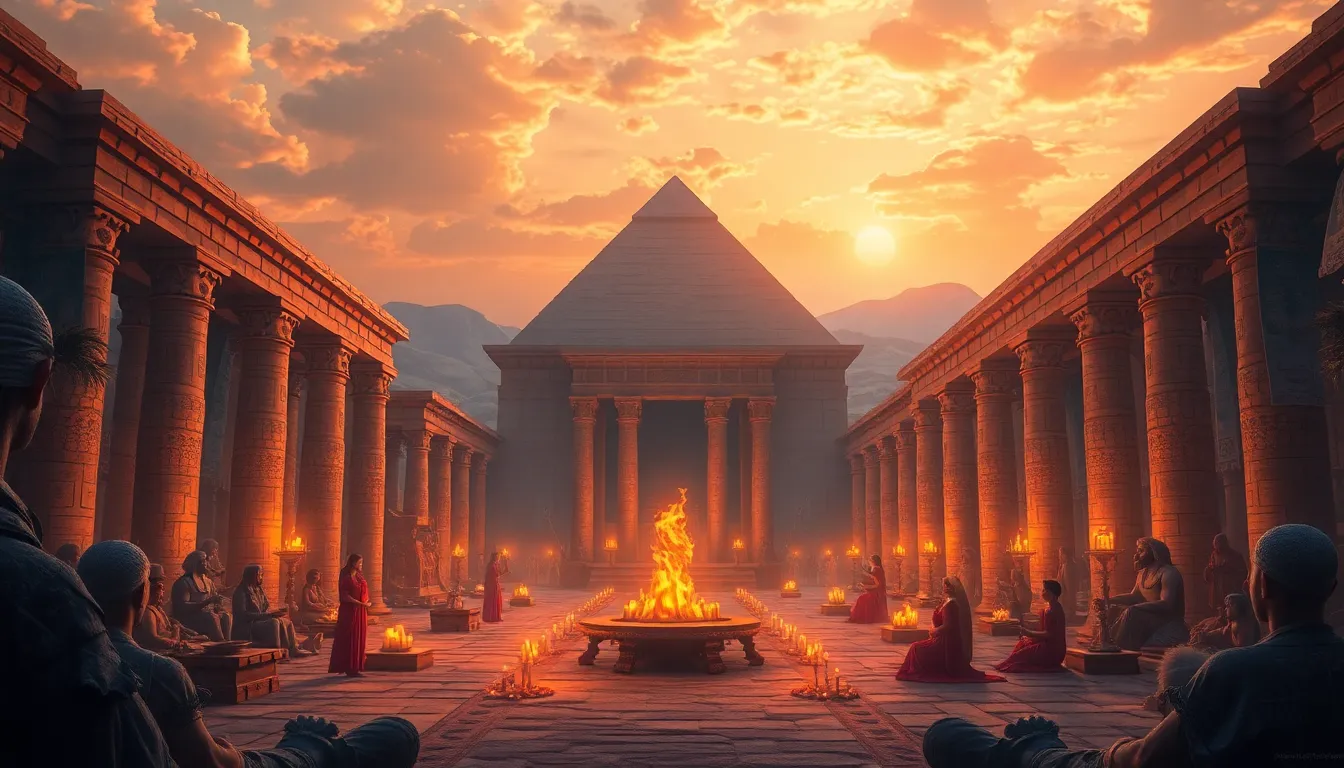How the Beautiful Feast of the Valley Transformed Ancient Egypt
I. Introduction
The Beautiful Feast of the Valley, known as the “Wag Festival,” was one of the most significant and vibrant celebrations in Ancient Egypt. This festival was primarily dedicated to honoring the dead and celebrating the interconnectedness of the living and the deceased. It was celebrated annually, drawing people from all walks of life, showcasing the rich cultural tapestry of Ancient Egyptian society.
The significance of the Beautiful Feast of the Valley extended beyond mere remembrance; it was a vital aspect of Ancient Egyptian culture that reinforced religious beliefs, social structures, and agricultural practices. This article explores the historical context, rituals, cultural impacts, economic implications, and the festival’s evolution over time, highlighting its transformative role in Ancient Egypt.
II. Historical Context of the Feast
The origins of the Beautiful Feast of the Valley can be traced back to the early dynastic periods of Ancient Egypt, where it was closely linked to the religious beliefs surrounding death and the afterlife. The festival coincided with the annual agricultural cycle, particularly the flooding of the Nile, which was crucial for farming and sustenance.
This celebration was not just a time for mourning but also a period of renewal and hope for the living, as it marked the time when families paid tribute to their ancestors. The feast’s timing within the agricultural calendar allowed communities to come together during the harvest season, ensuring that the abundance was shared.
III. The Rituals and Ceremonies of the Feast
During the Beautiful Feast of the Valley, various rituals and ceremonies were performed, each imbued with deep symbolism. Key rituals included:
- Processions to Tombs: Families would travel to the tombs of their ancestors, bringing offerings of food, flowers, and other goods.
- Ritual Sacrifices: Animals were often sacrificed to honor the gods and the deceased, believed to ensure their favor.
- Festive Meals: Communal feasting took place, where the living and the dead were symbolically brought together through shared meals.
Offerings and sacrifices played a crucial role in these ceremonies, as they were seen as essential to appeasing the deceased and ensuring a continued connection with them. The ceremonies were rich in symbolism, emphasizing the importance of honoring the dead and the belief in an afterlife.
IV. Social and Cultural Impact
The Beautiful Feast of the Valley served as a unifying event for communities across Ancient Egypt. It fostered social cohesion, bringing together families, friends, and neighbors in a shared celebration of life and remembrance of the dead.
This festival significantly influenced art, music, and dance, as various forms of artistic expression emerged from the festivities. The vibrant celebrations inspired:
- Paintings depicting scenes of the feast and rituals.
- Songs and dances that celebrated the connection between the living and the dead.
- Literature that reflected the themes of remembrance and renewal.
Moreover, the feast reinforced social hierarchies, as the wealth and status of families often dictated the scale of their celebrations and the quality of their offerings, showcasing the societal structure of the time.
V. Economic Implications
The Beautiful Feast of the Valley had profound economic implications for Ancient Egyptian society. The feast stimulated trade and local economies, as merchants and artisans catered to the needs of the festival-goers. Key economic impacts included:
- Increased Trade: Local markets thrived as people sought goods for offerings and celebrations.
- Resource Redistribution: The communal aspect of the feast encouraged the sharing of resources, enhancing community bonds.
- Development of Crafts: The demand for ceremonial items and offerings contributed to the growth of local crafts and industries.
Thus, the feast was not only a cultural celebration but also a significant economic event that benefited many sectors of society.
VI. The Feast in Literature and Art
The Beautiful Feast of the Valley is depicted in various forms of Egyptian art, showcasing the importance of this celebration in the lives of the ancient Egyptians. Artists captured scenes of the festivals, the rituals performed, and the offerings made, preserving these moments for posterity.
References to the feast can also be found in ancient texts and inscriptions, which highlight its significance in religious and social contexts. These literary works provide insights into the beliefs and practices surrounding the festival.
The legacy of the Beautiful Feast of the Valley continues to resonate in subsequent Egyptian literature, where themes of death, remembrance, and community persist, illustrating the enduring impact of this celebration.
VII. Transformation Over Time
Over the centuries, the Beautiful Feast of the Valley evolved through different dynasties, adapting to changes in religious beliefs and societal norms. Rituals and cultural significance associated with the feast transformed, reflecting broader shifts within Ancient Egyptian civilization.
As Egypt encountered various influences, including foreign cultures, the feast adapted, incorporating new elements while maintaining its core purpose of honoring the dead. Modern interpretations of the feast often reflect these historical changes, showcasing the dynamic nature of cultural traditions.
VIII. Conclusion
In conclusion, the Beautiful Feast of the Valley played a transformative role in Ancient Egypt, shaping religious practices, social structures, and economic interactions. Its legacy endures as a testament to the importance of cultural traditions in understanding ancient societies. As we reflect on this feast, we recognize the profound connections it forged among the living and the dead, illustrating the rich tapestry of Ancient Egyptian life and the enduring significance of remembrance.




